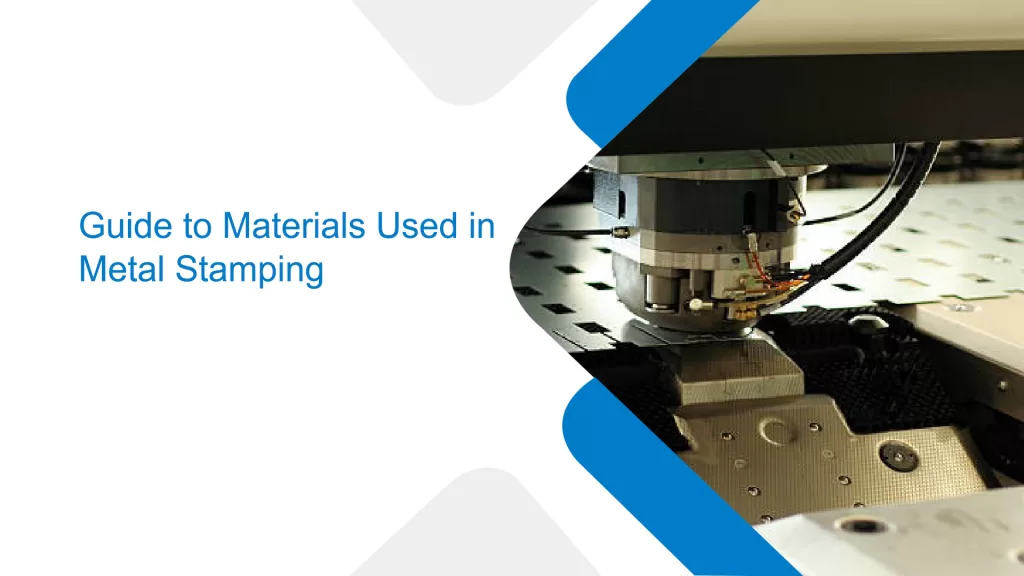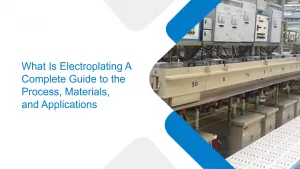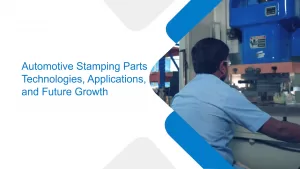Guide to Materials Used in Metal Stamping
- Metal Stamping |
- Feb 7, 2025

Ever wondered what makes metal stamping strong and precise? The secret lies in the materials used. Different metals offer unique benefits, some are strong and others are flexible. Choosing the right High-Precision Automotive Parts is the key to creating durable and efficient stamped parts. To make this step simple let us explore the most commonly used materials in custom metal stampings and their unique advantages.
Selecting the Right Metal for Stamping
The metal you select has a huge impact in how the final product turns out. To pick the best one for your project, consider these questions:
- Is the material within your budget?
- Can it be easily shaped into the required form?
- How strong and durable does it need to be?
- Will it withstand the necessary environmental conditions?
- What long-term benefits should it offer?
- How will the finished product be used?
Thinking about these questions helps you choose better. With so many options, an experienced metal stamping manufacturer can guide you and make the decision simpler.
Copper Alloys for Metal Stamping
Copper and its combinations like brass and bronze, are often used in metal stamping. They are too soft for tough jobs but are great for making thin or detailed parts. Their flexibility makes them ideal for industries needing complex designs.
Benefits of Copper Alloys in Metal Stamping:
- Excellent electrical and thermal conductivity
- High resistance to corrosion allows for precise shaping and complex designs
- Withstands UV exposure and harsh temperatures
- Naturally antimicrobial, reducing bacterial growth
- Visually appealing for decorative applications
Copper alloys carry electricity well, so they are important for wiring and circuit boards. They resist rust, helping them last longer in tough conditions. They are easy to work as they are light. Brass and bronze have unique colours and shiny finishes. This unique feature makes copper alloys great for jewellery and art. Copper alloys in metal stamping give strong and good looking results in many industries.
Steel Alloys for Metal Stamping
Steel is a strong and bendable material used in metal stamping. It is popular since it is powerful and easily identifiable. Mixing it with other metals makes it harder and less likely to rust. Different treatments can also enhance its properties before or after stamping.
Benefits of Steel Alloys in Metal Stamping:
- Strong and long-lasting
- Magnetic (except for most stainless steel)
- Affordable and easy to find
- Can be treated to improve hardness or rust resistance
- Suitable for various industries
As steel is strong and versatile, many industries including automotive stamping suppliers, prefer to use alloys for metal stamping. Do you know what? Steel is commonly used in automotive and manufacturing. It holds its shape under pressure and supports heavy loads. Some types resist rust, making them ideal for outdoor and marine use. Heat treatment can also make steel even harder. The ability to adjust steel’s properties makes it a reliable option for different stamping needs. It is really a preferred option in metal stamping because it is strong and affordable.
High Strength Low Alloy Steels in Stamping (HSLA)
HSLA steel is a preferred option for metal stamping. It is stronger and more durable than regular carbon steel. This type of steel is made to meet specific mechanical needs rather than follow strict chemical compositions. It is designed to offer better strength, flexibility, and resistance to rust.
Benefits of HSLA Steel in Metal Stamping:
- Stronger than carbon steel
- Resists rust and corrosion
- Lightweight but durable
- Flexible and easy to shape
- Suitable for heavy duty applications
HSLA steel is strong and lightweight so it is used in many industries like buildings and airplanes. It can handle high pressure and lasts a long time. Car Body Parts Manufacturers like it because it is durable but not too heavy. It works well in tough weather so it is great for outdoor and structural use. Steel is highly strong and flexible. This feature makes it a perfect option for stamping projects.
Aluminum Alloys for Metal Stamping
Aluminum alloys are extensively used in metal stamping. They are lightweight but strong. This qualities makes aluminium alloys a great option for many industries. These alloys last long and resist corrosion which adds to their appeal. Though they may cost more than steel, their benefits make them worth choosing.
Benefits of Aluminum Alloys in Metal Stamping:
- Lightweight but strong
- Resists rust and corrosion
- Easy to shape without breaking
- Conducts heat and electricity well
- Needs little maintenance
Aluminium alloys are mainly used in buildings and airplanes. They don’t rust. This quality makes them perfect for outdoor and wet areas. These alloys make vehicles lighter and improves fuel efficiency. Car Body Parts Manufacturers prefer aluminum because it’s strong but not heavy. It is great for projects which need strong and flexible qualities. Its long life, rust resistance, and light weight make it a reliable choice for stamping projects.
Final Thoughts
There are many materials which work well for metal stamping so it is important to select the best for your requirements. If you don’t know which one would work best for you, Eigen has experts who can help. We are a world leader in High-Precision Automotive Parts because we provide solutions of high quality across different industries. With the highest-tiered certifications and 14 years of experience, we ensure excellence in design, tooling, stamping, plating, molding, and assembly. Connect with us today to discover how our innovative solutions will change your manufacturing process.




